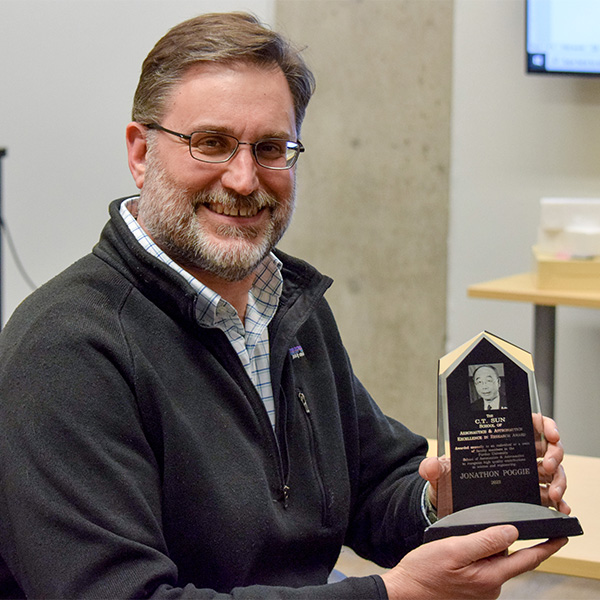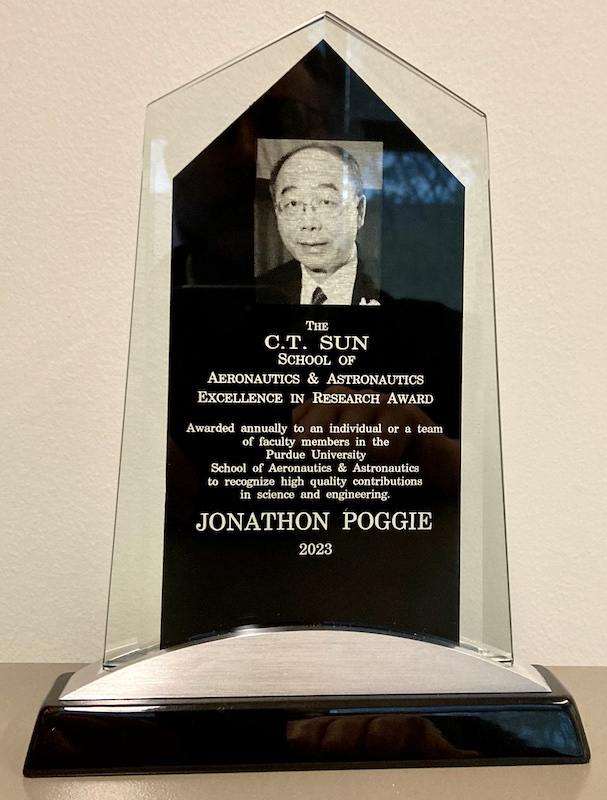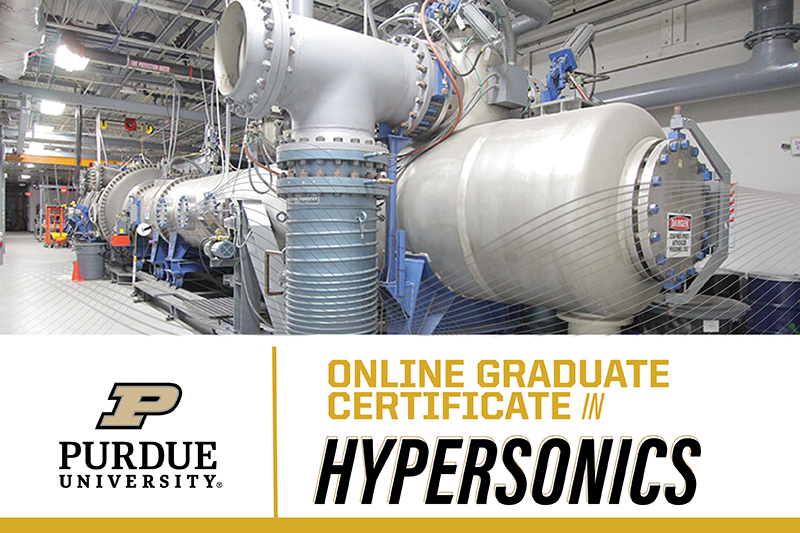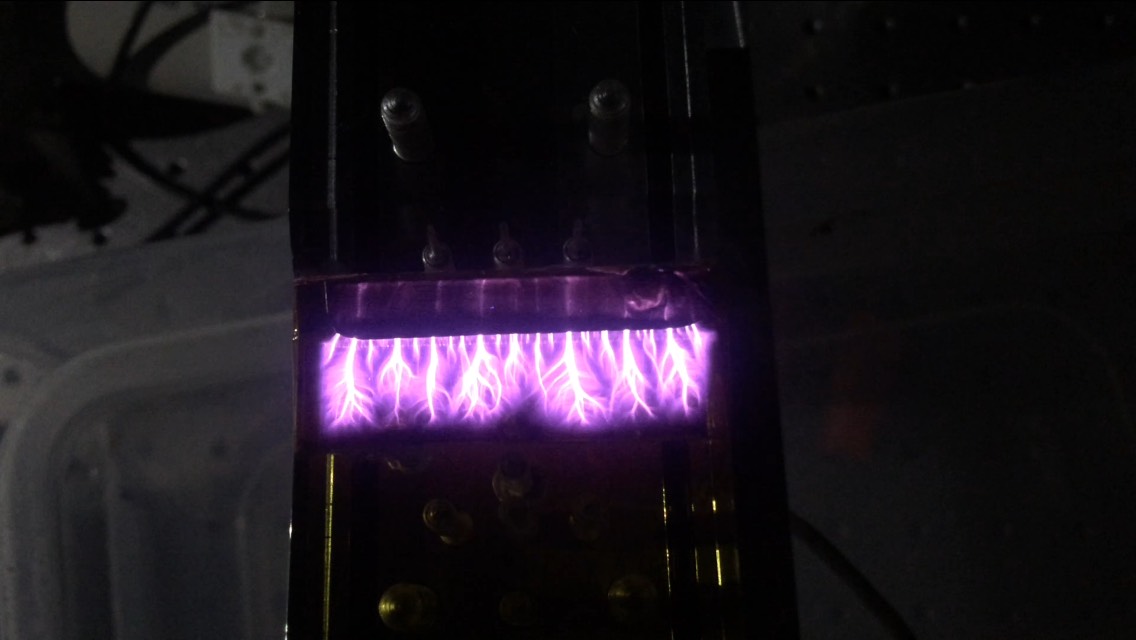Flow Resolution
News in 2022-2023 from Prof. Poggie's research group.
C. T. Sun Research Award
Many thanks to my colleagues in the School of Aeronautics and Astronautics for the C. T. Sun Research Award.
Hypersonics Certificate
Purdue has announced a new online graduate certificate in hypersonics. This is a fully online program consisting of a four-course, 12 credit series that can be tailored to a student's interests. Credits earned under the certificate program can be applied to an online master's degree. Full details are given in the press release and the certificate web page.
December 2022 Commencement
Many congratulations to Dr. Robert Alviani! Robert is my fourth PhD graduate at Purdue, co-advised with Prof. Gregory Blaisdell. Robert's work has focused on computations of flow unsteadiness and aerodynamic heating in hypersonic gap flows.
Interviews on Hypersonics
Over the last year, I've done a couple of interviews on hypersonic flight for Purdue University Strategic Communications (newsroom). The interviews are now up on YouTube. The interviewer's questions have been edited out.
From November 2021:
From March 2022:
Plasma Modeling Book
For those interested in plasma aerodynamics, there is a new book on plasma modeling out, with chapters by Jonathan Poggie, Igor Adamovich, Sergey Macheret, Bernard Parent, and others: Plasma Modeling (Second Edition): Methods and applications DOI: 10.1088/978-0-7503-3559-1
Recent Reading
Constance Reid, Courant in Göttingen and New York: The Story of an Improbable Mathematician, Springer-Verlag, New York, 1976. ISBN-10: 0-387-90194-9
This is a biography of Richard Courant, the C in the famous CFL number in the numerical solution of partial differential equations. Courant was born in 1888 in Silesia (then Prussian, now part of Poland). Living through a number of financial and family struggles, he earned a doctorate in 1910 from the University of Göttingen, working as an assistant to the famous mathematician David Hilbert.
Courant served in the German army in World War I, and was wounded early on. During the war he worked on methods for soldiers in trenches to communicate without exposing themselves to enemy fire. This led to a light signaling system and a radio system called earth telegraphy.
Courant eventually returned to Göttingen as a professor in 1921. There he founded a Mathematical Institute, raised funds for a new building to house it, and created a thriving mathematics community. That successful period came to an abrupt end in 1933, when he was dismissed from the university under the rising authoritarian politics of the era.
Courant was very reluctant to permanently leave Germany, but in 1934 he took a position at New York University in New York City, where he remained for the rest of his life. One of his passions was creating an American parallel to the University of Göttingen Mathematical Institute. He was eventually successful, creating what is now known as the Courant Institute of Mathematical Sciences at NYU.
Even before the entry of the United States into World War II, Courant realized the urgent need to prepare the country. He worked tirelessly until the end of the war on training and on application of mathematics to military needs. His war work led to his famous book with Kurt Friedrichs, Supersonic Flow and Shock Waves, still a much used reference for compressible flow. His dedication to education and mathematics continued until his death in 1972.
Plasma-Based Separation Control
Electrical discharges and other plasma-based devices are an alternative approach to flow control that offers great promise for a variety of aerodynamic applications. These devices can change flow structure through a combination of an electromagnetic body force and volumetric heating. Their advantages include a low penalty when not in use and the ability to actuate a flow over extremely short time scales.
Our group's recent research (Poggie, AIAA J., 2019; Ngoh and Poggie, AIAA J., 2022; Ngoh and Poggie, Phys. Rev. Fluids, 2022) has found that certain unsteady, separated flows are particularly sensitive to incoming disturbances with a form similar to an oscillating wall jet. Plasma actuators can create a similar flow profile, and thus offer the possibility of mitigating adverse large-scale separation unsteadiness. In ongoing work, we are exploring whether a broader class are of separated flows are susceptible to this type of perturbation.





